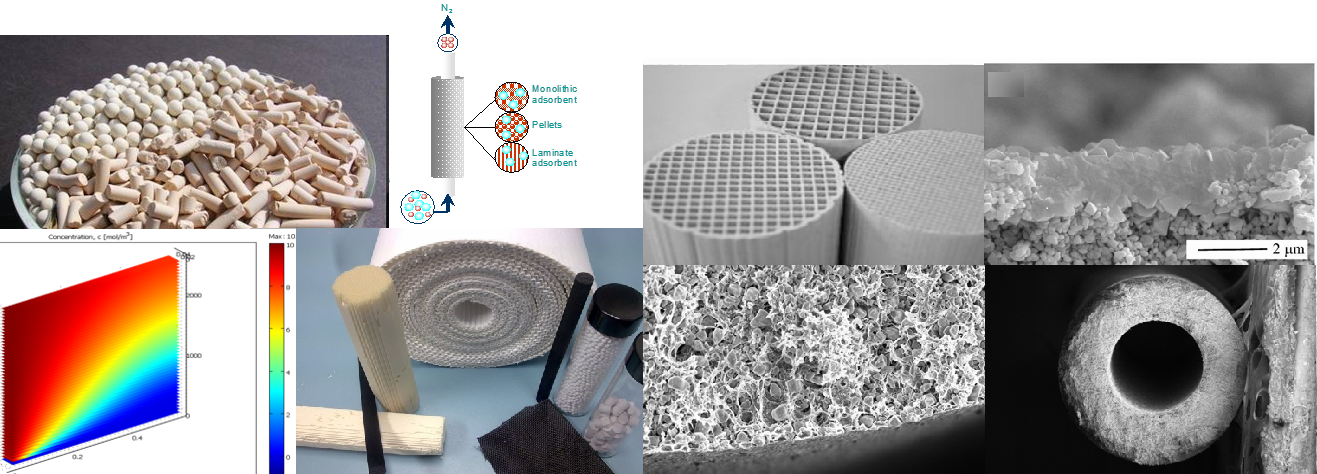
Adsorption and Separation research laboratory (ASRL) focus broadly lies at the interface of chemical, materials science and environmental engineering, where the general goal of this group is to develop advanced materials and processes for clean energy and sustainable chemical processes. Here are some of the research areas in our laboratory.
- Nanomaterials for Enhanced Adsorption: Exploring the synthesis and characterization of nanostructured materials with tailored surface properties to achieve higher adsorption capacities and selectivity for target molecules. This could involve the design of novel carbon-based materials, metal-organic frameworks (MOFs), or other nanocomposites.
- Membrane-Based Separation Technologies: Investigating advanced membrane materials and processes for efficient separation of gases, liquids, and ions. This could include developing nanoporous membranes with tunable pore sizes and surface chemistries for specific separation tasks, such as gas purification, desalination, or solvent recovery.
- Adsorption-Driven Energy Storage Systems: Researching the use of adsorption processes for energy storage applications, such as developing adsorbent materials for high-capacity hydrogen or methane storage for fuel cell and renewable energy systems. This could involve exploring new adsorbent materials and operating conditions to optimize storage capacity and energy efficiency.
- Selective Adsorption for Environmental Remediation: Investigating selective adsorption processes for removing pollutants and contaminants from air, water, and soil. This could include developing adsorbent materials capable of selectively capturing specific pollutants, such as heavy metals, organic pollutants, or emerging contaminants like pharmaceuticals and microplastics.
- Dynamic Adsorption Processes and Kinetics: Studying the dynamic behavior and kinetics of adsorption processes to improve understanding and optimize performance. This could involve developing advanced experimental techniques and computational models to elucidate adsorption mechanisms, predict adsorption behavior under different conditions, and optimize process parameters for enhanced separation efficiency.
- Integration of Adsorption with Other Separation Technologies: Exploring synergistic approaches by integrating adsorption with other separation techniques, such as membrane filtration, distillation, or chromatography, to enhance overall separation performance and energy efficiency. This could involve developing hybrid separation processes and optimizing their design and operation for specific applications.







